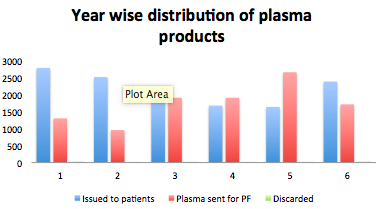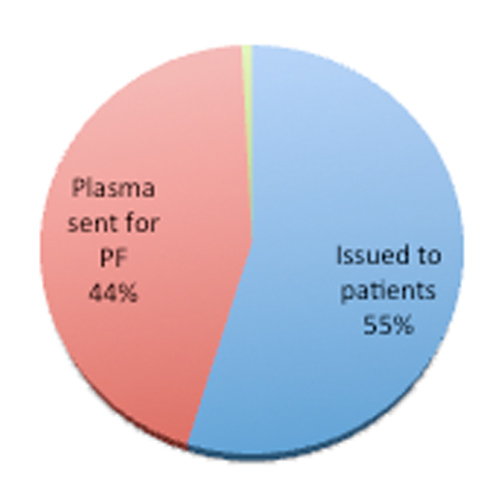Bala Bhasker PM*, Anamika Aluri, Kishan Rao
Yashoda Hospitals, Hyderabad, India
Background
According to World Health Organization (WHO) each country must plan for its safe and consistent supply of blood and plasma products for regular clinical needs as well as in case of any disaster. Self-sufficiency ratio is the key parameter to assess the ability of a country to meet its need for plasma derived medicines, through utilization of locally collected plasma. It also helps in proper usage of surplus plasma in blood banks.
Aim
This study aims at evaluating the impact of plasma fractionation industries as an add on in proper utilization of plasma components in the current Indian scenario.
Materials and Method
A retrospective observational study was conducted to analyze the data of 6 years in providing excess plasma for plasma fractionation (PF) industries at Blood Bank, Yashoda Hospitals, Hyderabad, India.
Results
A total of 25361 whole blood donations were collected from qualified blood donors between January 2013 and December 2018. Of which, 23448 plasma units were prepared from the donations which were negative for Transfusion Transmittable Infections (TTIs). Only 54.7% (12832) of the plasma units were transfused to various patients and 0.79% (187 units) was discarded. The remaining 44.3% (10301) of the plasma units were sent to PF companies at regular intervals where they are used for preparing varied plasma derived medical products.
Conclusion
Six years of shipping plasma to PF interdicted wastage of 44.3% (10301) TTI negative plasma units. Implementation of usage of plasma components for transfusion to patients along with shipping excess plasma for PF periodically improves the effective utilization of blood components as well as preparation of medical products in large numbers by PF industries. However, the blood donation process and plasma supplied should meet the specifications as per Drugs and Cosmetics Act, 1940 and Rules made thereunder.

